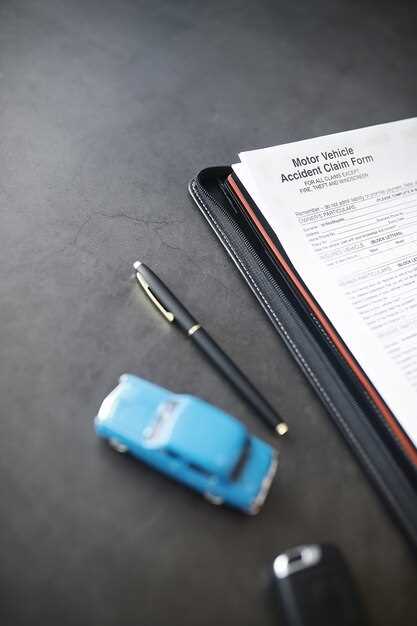
Purchasing a classic car is an exciting journey that combines passion, nostalgia, and investment potential. For first-time buyers, however, this process can also be overwhelming without the right direction. This comprehensive guide provides a detailed checklist to help you navigate through the essential considerations when buying your dream classic vehicle.
Understanding the intricacies of classic car purchases is crucial. Unlike their modern counterparts, classic cars come with unique challenges and opportunities. Every detail matters, from the vehicle’s provenance to its mechanical condition. With our checklist in hand, first-time buyers can confidently assess their options and avoid common pitfalls. Whether you’re looking for a vintage muscle car or a nostalgic convertible, our guide will equip you with the knowledge needed to make an informed decision.
As you embark on this exciting venture, remember that patience and thoroughness are key. This checklist is not just a list of features but a roadmap that will lead you toward a rewarding classic car ownership experience. Embrace this chance to learn and enjoy the fascinating world of classic automobiles!
Assessing the Car’s Condition: Key Elements to Inspect

When buying a vintage or classic car, assessing its condition is crucial. Here’s a comprehensive checklist to guide you through the inspection process:
- Exterior Inspection:
- Check for rust, dents, and scratches on the body.
- Inspect paint quality; look for mismatched colors or peeling.
- Assess gaps between body panels for uniformity.
- Interior Evaluation:
- Examine upholstery for tears, stains, or excessive wear.
- Test functionality of the dashboard instruments and controls.
- Look for signs of water damage or mold.
- Mechanical Checks:
- Inspect the engine for leaks and corrosion.
- Check the condition of belts and hoses.
- Listen for unusual noises during startup and idling.
- Underbody Inspection:
- Examine the frame for structural integrity and any signs of repair.
- Look for oil leaks and rust on the undercarriage.
- Inspect suspension components for wear and damage.
- Tire Assessment:
- Check for even wear patterns on tires.
- Inspect tread depth to ensure adequate grip.
- Look for age cracks or bulges in the rubber.
- Documentation Review:
- Verify the vehicle history report for accidents or title issues.
- Check service records for regular maintenance.
- Obtain classic car appraisals if available.
Using this checklist will help you make a well-informed decision when purchasing a vintage or classic car. Thorough inspection can save you from costly repairs in the future.
Understanding the Paperwork: Titles, Registration, and History
When purchasing a classic car, understanding the necessary paperwork is crucial for a smooth transaction. This guide provides a checklist of essential documents and insights regarding titles, registration, and the vehicle’s history.
The title is a legal document that proves ownership of the vehicle. Ensure that the title is clear, meaning there are no liens against it. Verify that the Vehicle Identification Number (VIN) on the title matches the VIN on the car. A salvage title or a rebuilt title can indicate previous damage or significant repairs, which may affect the car’s value and insurability.
Registration is the process of officially recording the car with the state. Check if the classic car is registered and if the registration is up to date. In some states, classic cars have specific registration requirements, such as being at least 25 years old. Be aware of these regulations to avoid potential issues.
Researching the vehicle history is essential in making an informed purchase. Use services like Carfax or AutoCheck to uncover details about past accidents, service records, and ownership history. This information can reveal whether the car has been well-maintained or if it has recurring issues.
In summary, ensure you have the title, confirm the registration status, and investigate the vehicle’s history thoroughly. This checklist is vital for any first-time buyer aiming to invest in a classic car without unforeseen complications.
Negotiating the Price: Strategies for First-Time Buyers

When it comes to purchasing a vintage or classic car, negotiating the price can be one of the most critical steps in the buying process. As a first-time buyer, having a solid strategy can empower you to secure a better deal while ensuring you are making a sound investment.
The first strategy involves thorough research. Gather information about the specific model you are interested in, including its market value, common issues, and available replacements. Websites, forums, and classic car clubs can be valuable resources for this purpose. Understanding the fair market price gives you a strong foundation to negotiate effectively.
Next, be prepared to highlight any imperfections during your inspection of the vehicle. If you notice flaws or required repairs–whether it’s paint chips, rust, or mechanical issues–use these as leverage during negotiations. Presenting evidence of needed improvements can justify a lower offer and demonstrate that you are an informed buyer.
Create a budget before engaging in negotiations. Know your limits and stick to them; this helps you avoid getting swayed by emotional attachments to a vintage vehicle. Decide ahead of time the maximum amount you are willing to spend and be firm about it during discussions.
Timing is also crucial. If you find the right classic car during a seller’s off-season or after it’s been on the market for an extended period, you might have a higher chance of negotiating a better price. Sellers who are eager to sell might be more flexible when it comes to pricing.
Lastly, consider making your offer slightly lower than what you are willing to pay. This gives you room to negotiate upwards while still remaining within your budget. Always remain respectful and courteous throughout the negotiation process; building rapport with the seller can sometimes lead to unforeseen concessions.


